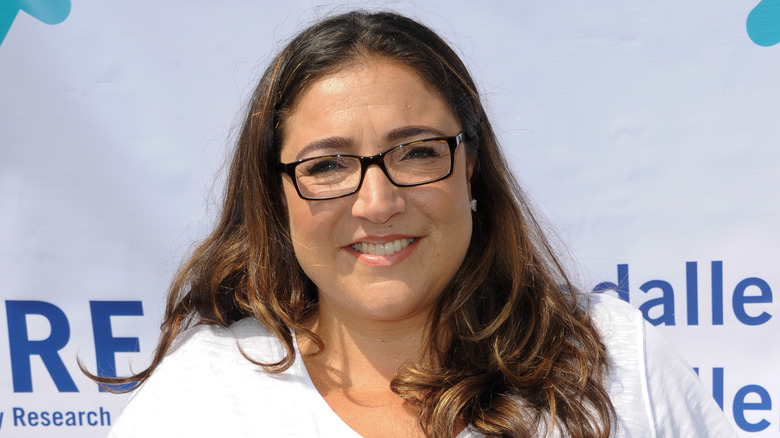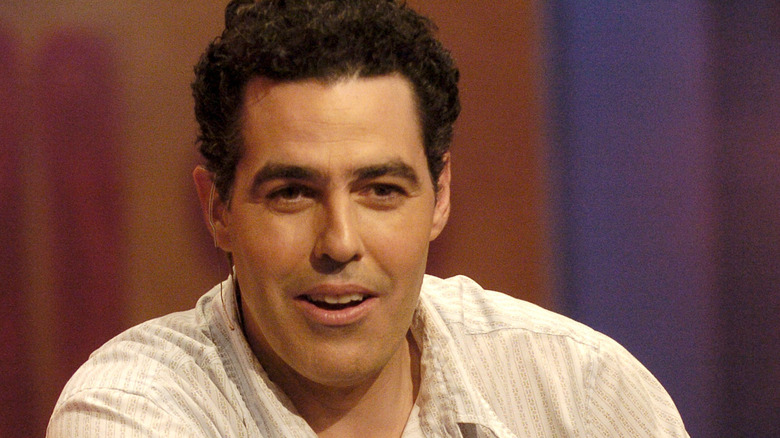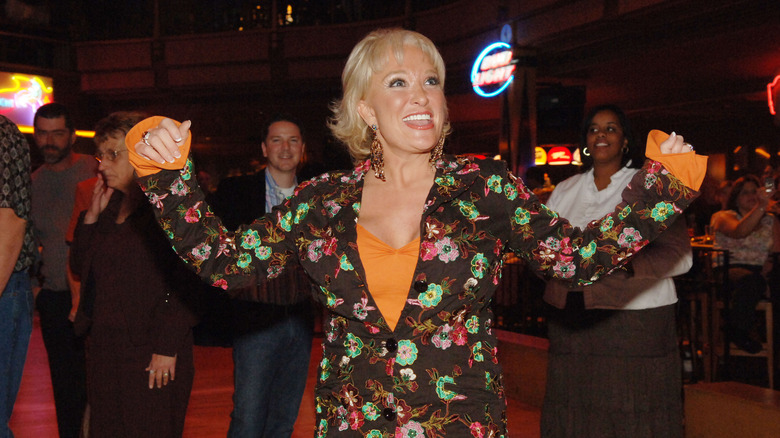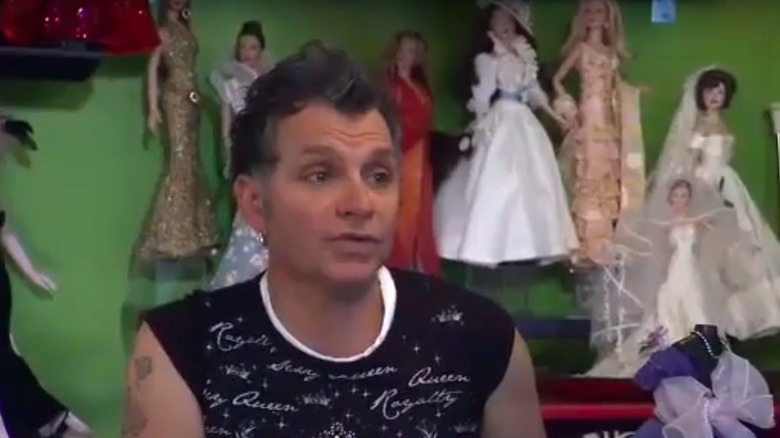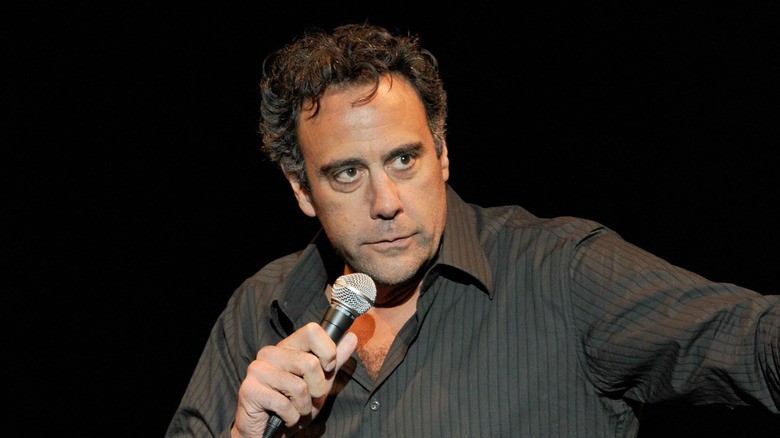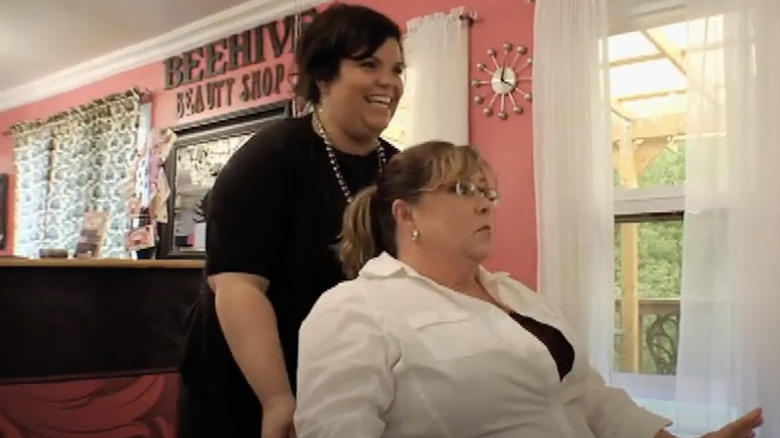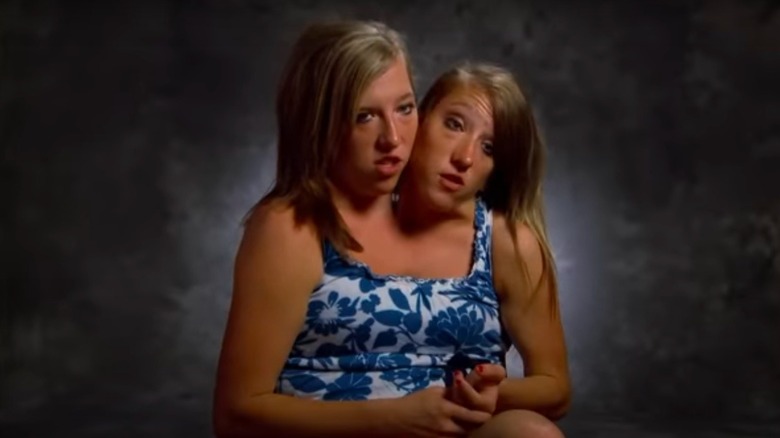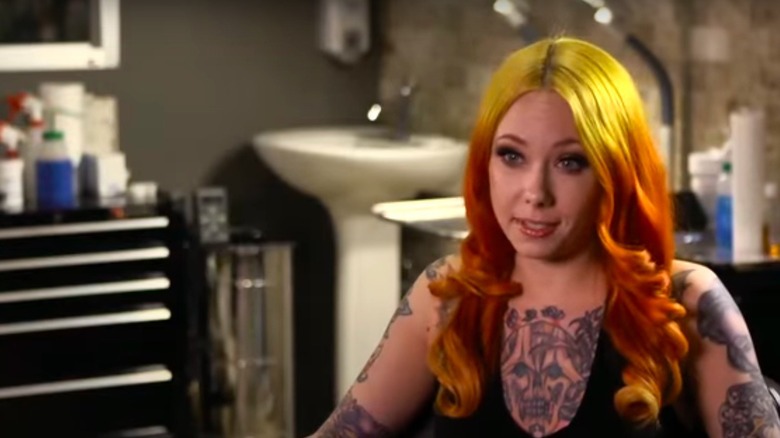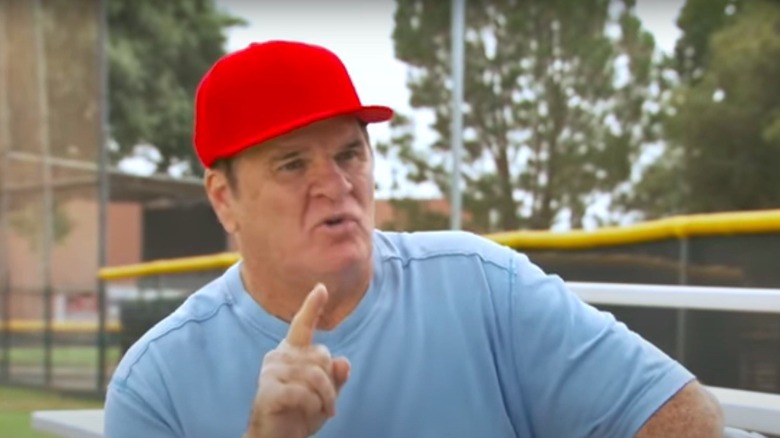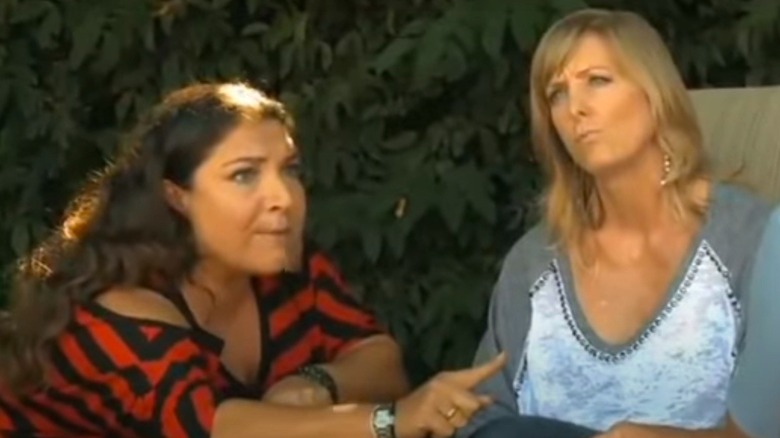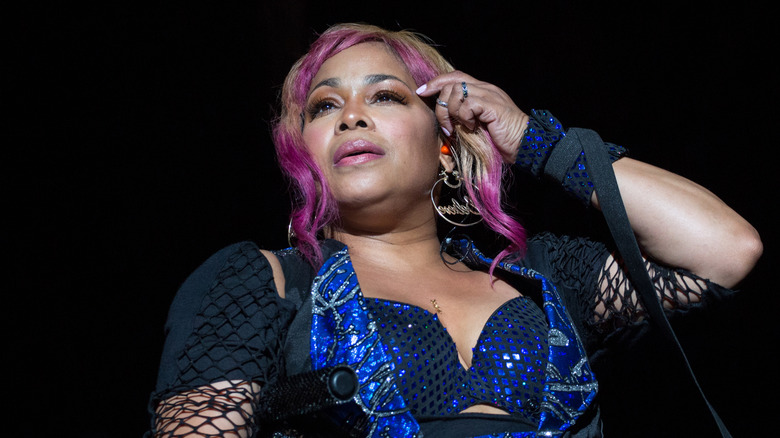TLC Shows You Forgot Existed
These days, TLC is home to a jaw-dropping array of reality television fare, ranging from "1000-Lb Sisters" to "90 Day Fiancé" and its seemingly endless stream of spinoffs. Given the current programming lineup, it's easy to forget that the origins of TLC were far more high-minded, originally springing from a NASA-linked government initiative dubbed the Appalachian Education Satellite Project. The result was the launch of The Learning Channel (TLC) in 1972, initially under the auspices of the Appalachian Community Service Network (ACSN). In 1991, the cable network was purchased by Discovery Communications, branded as an educational broadcaster.
Over the course of the 1990s, The Learning Channel evolved away from its educational roots and morphed into the TLC that viewers know today, thanks to such high-profile hits as "Extreme Couponing," "Trading Spaces," and "What Not to Wear." During the ensuing decades, TLC continued to evolve, exploring various niches such as unique and unusual families (a category that ran the gamut from "19 Kids and Counting" to "Sister Wives" to "Little People, Big World") and the so-called "celebreality" genre — at one point TLC even attempted to claim some space in the late-night sphere with the launch of a short-lived talk show.
There have been so many shows that have aired on the network over the years that it's easy for many of them to slip anyone's memory.
Great Books (1993)
Back in TLC's earlier incarnation as The Learning Channel, the network partnered with veteran CBS news anchor Walter Cronkite to produce a series called "Great Books." Cronkite served as the series' executive producer and had no on-air presence on the series, noted the Los Angeles Times. As its title would suggest, the series discussed books — and not just any books, but bona fide literary classics. The series was seen to be prestigious enough to attract some top-tier talent, with actor Donald Sutherland tapped as narrator.
The tomes covered on "Great Books" spanned a wide swath, including Sun Tzu's "The Art of War" and Machiavelli's "The Prince." Each episode focused on a single book, with appropriate people interviewed about their unique knowledge of that particular book. For example, Grace Slick, Jefferson Airplane singer, spoke about "Alice's Adventures in Wonderland," while "Star Trek" legend Leonard Nimoy discussed "The War of the Worlds."
In 1996, TLC cleared its schedule for a few days for a mammoth 36-hour "Great Books" marathon, dubbed the "Great Books Festival." "By exploring the impact of each book through archival footage, original material and insights provided by leading scholars and prominent personalities, we intend to make the world's most influential classics accessible and profound for our viewers," TLC's then-senior vice president and general manager told the Los Angeles Times at the time.
The Adam Carolla Project (2005)
By 2000, the erstwhile Learning Channel had fully morphed into TLC, pretty much entirely ditching anything even remotely connected with education — the TLC motto could have been "Nothing to learn here!" That was the year that "Trading Spaces" made its debut, becoming a mega-hit that took the network by surprise while stealing some real estate that had previously been almost exclusively held by HGTV.
Realizing there were big bucks to be made in home-renovation programming, in 2005 TLC premiered "The Adam Carolla Project." As the title indicated, the show was built around comedian Adam Carolla, known to radio listeners from the call-in show "Loveline" and to TV viewers for co-hosting Comedy Central's "The Man Show" with pal Jimmy Kimmel. The show followed the efforts of Carolla — who had been a professional carpenter before hitting it big in showbiz — as he renovated his dad's Los Angeles home in order to flip it. Naturally, there were challenges aplenty, including a badly deteriorated roof, pipes that leaked, the lurking specter of asbestos hidden in walls, and a haplessly inept construction crew.
The show ran for just one 13-episode season, and a scathing review in The New York Times made it clear why the show wasn't renewed. "After a few minutes of watching the house show, it occurred to me that this really is like watching paint dry," wrote The Times' Ned Martel. "But I was wrong: they must be saving that for the finale."
Tuckerville (2005)
Celebreality shows were all the rage in the mid-2000s, and TLC delivered another one with "Tuckerville." The series focused on country music star Tanya Tucker, who scored her first hit at age 13, had a scandalous affair with Glenn Campbell, and had checked into the Betty Ford Center to address a pretty serious cocaine addiction. When her TLC series bowed in, Tucker was in her late 40s and attempting a career comeback. "Tuckerville" invited viewers into her home, with cameras following her as she ran her business, recorded a new album, and raised two kids.
Speaking with KSL at the time, Tucker was hopeful the show would show viewers a side of her other than the drugged-out hellraiser depicted in the media. "Maybe people will see this, and they'll understand me," she explained. "I have some of the same problems as everybody else, and maybe after this, they'll be able to relate to me a little better."
Ultimately, viewership was not as high as had been hoped, and "Tuckerville" wasn't renewed after its inaugural season. Tucker, however, was hopeful to restart the show with a new network — and a new name. "It's called 'Tuckertime' now. I almost have six shows ready to go. We are looking for another network," she told Reuters. Unfortunately, despite her best efforts, "Tuckertime" never did make it to television.
Fashionably Late with Stacy London (2007)
In 2007, TLC execs came up with the idea of launching the network's first-ever late-night talk show. Tapped to host was Stacy London, who'd already experienced previous TLC success co-starring the hit series "What Not to Wear" alongside fellow fashionista Clinton Kelly. No longer part of a doubles act, London was flying solo when the show, "Fashionably Late with Stacy London," made its debut.
Given London's expertise in fashion, that became the focus of the show; instead of a punchline-packed monologue, she talked about what she was wearing. "The concept is a little like a party on a Friday night that you don't have to leave your couch for," London told the New York Daily News.
To say the show did not connect with viewers is putting it mildly; in fact, TLC yanked it off the air after just six episodes aired. Years later, London admitted the show's near-immediate cancellation still stung, but she'd been able to put the experience in perspective. "The fact that it didn't work, and there were many reasons it didn't, was perhaps one of the greatest disappointments of my life," she confessed in a 2018 Instagram post. "I put everything I had, everything I knew into making that show and part of me never quite recovered from its loss. I can't say failure. I don't believe in failure or success: it's all experience and we need to take it for what it is, not slap a value judgment on it."
King of the Crown (2009)
The unexpected success of "Toddlers & Tiaras" in 2009 led TLC execs to scramble for more programming set in the eccentric world of beauty pageants. They emerged with "King of the Crown," a reality show that focused on Cyrus "Cy" Frakes, whose actual how-he-made-a-living business was training wannabe pageant queens via his company, Gowns & Crowns. Frakes was something of a superstar in the pageant realm, with women he'd trained having won titles such as Miss Teen and Miss World. All told, Frakes took credit for more than 1,000 pageant victories.
Speaking with Entertainment Weekly, Frakes explained his passion for pageants. "Pageants are like theater," he explained. "They're like sports. Pageants are like the Olympics of beauty in our society. It's where you're setting yourself up to be judged by your inside and outward appearance."
While TLC ordered 12 episodes of "King of the Crown," only eight were aired before the network pulled the plug due to low ratings.
I Kid with Brad Garrett (2011)
Back in the 1950s, Art Linkletter struck television gold with "Kids Say the Darndest Things," in which he asked children loaded questions that would lead them to deliver hilariously cute answers. While the original ran from 1952 until 1969, "Kids" was rebooted in the late 1990s with Bill Cosby as host, and again in 2019 with comedian Tiffany Haddish.
In 2010, TLC announced it came up with the not-so-original idea of producing its own knock-off, with "Everybody Loves Raymond" alum Brad Garrett starring in the cleverly titled "I Kid with Brad Garrett." Judging by the network's tone at the time, TLC had pretty high hopes for the series. "This show is the next evolution of family entertainment on TLC," gushed Nancy Daniels, TLC's senior vice president of production and development, via The Hollywood Reporter. "We are thrilled to have Brad Garrett on board. His comedic instincts and enthusiasm for the project are going to put this series over the top. And, at the heart of this show are the candid and unfiltered reactions from kids, which makes this a perfect fit for the network."
When the show finally premiered in the summer of 2011, it struggled in the ratings and did not last long. After just a few episodes aired, TLC yanked the show off the air. The vacant time slot was filled by reruns of "Toddlers & Tiaras."
Big Hair Alaska (2011)
Following the short-lived series "Sarah Palin's Alaska" that aired on TLC in 2010 and focused on former Alaska governor and failed vice-presidential candidate Sarah Palin, TLC drummed up a Palin-adjacent reality show — technically, a two-part special — set in her hometown of Wasilla, Alaska. "Big Hair Alaska" chronicled the goings on at the Wasilla beauty salon where Palin allegedly received her signature beehive-style 'do.
"This special goes inside a busy hair salon [in] Wasilla, AK, where the personalities of the owner and her staff are as big as the hairstyles they create," TLC described the show, as reported by the Daily Mail.
If the show had drawn sufficient ratings, TLC would have given the green light for more episodes. Unfortunately, the show proved to be about as successful as Palin's political prospects; "Big Hair Alaska" never made it beyond those two episodes, and the show was never heard from again.
Abby & Brittany (2012)
"Abby & Brittany" marked something of a television milestone, given that it was the first docuseries focusing on conjoined twins. The series followed the lives of Abby and Brittany Hensel, who share a single body that combines at the torso. While the two were previously featured on a different network in the special "Joined for Life," "Abby and Brittany" was less about their physicality than it was the triumphs the sisters experienced in their day-to-day lives, such as getting a driver's license — no mean feat considering that each sister controls a different side of their shared body, requiring a lot of coordination between them in order to operate a motor vehicle. "When we drive Abby is [in] control of the gas and the brakes and we both steer, and I'm in charge of the blinker," said Brittany in an interview with OMG Stories.
The series covered a pivotal time in the women's lives, spanning the period after they graduated from college to when they were looking for a job, ultimately getting hired as teachers. "Obviously right away we understand that we are going to get one salary because we're doing the job of one person," Abby told BBC News.
"Abby & Brittany" only ran for a single eight-episode season, and was not renewed for a second.
America's Worst Tattoos (2012)
At a certain point in the early to mid-2010s, reality shows set within tattoo parlors became all the rage. This unexpected TV craze resulted in numerous tattoo-related series, including the likes of "Ink Master," "LA Ink" (which spawned a bunch of spinoffs set in different cities), and "Tattoo Nightmares." TLC added to the pile with "America's Worst Tattoos." The series centered around flame-tressed tattoo artist Megan Massacre, whose specialty was inking over her clients' hilariously terrible tattoos — a process she jokingly referred to in an interview with the New York Daily News as "polishing a turd."
According to Massacre, she took on the specialization due to having several unfortunate tats of her own, which she blamed on an unsavory and not particularly talented tattoo artist who mentored her when she was younger. "I was 18 years old and I let him cover me in tattoos," she explained. "He was not very good."
The tattoos featured on the show were indeed as terrible as the title would lead viewers to believe, boasting awful artwork, cringe-inducing imagery, and some hilariously misspelled words. The series ultimately ran for 24 episodes.
On the Fly (2012)
Debuting in 2012, "On the Fly" took viewers behind the scenes at Southwest Airlines, chronicling all the drama that takes place in the airport, at the gate, and up in the air. This, as viewers discovered over the course of 13 episodes, ranged from lost luggage to unexpected flight delays to unpredictable weather. The show received a high level of access from Southwest and took viewers into areas of airports and airplanes that are normally off-limits to passengers. As TheWrap reported, the show centered on two of the airline's airport hubs in Denver and Baltimore.
"It's great to eavesdrop," Howard Lee, TLC's senior vice present of production and development, told NBC News of the show's voyeuristic appeal to viewers. "Airports are complete microcosms, and each of them has stories and frustrations. They are incredibly relatable. We were able to capture that."
Interestingly, "On the Fly" marked the second time that Southwest allowed its operations to be filmed for reality TV. Back in 2004, the same airline was the subject of the A&E reality series "Airline," which followed a very similar flight path.
Pete Rose: Hits & Mrs. (2012)
Baseball star Pete Rose, who began and finished his career on the Cincinnati Reds (as a player, and then manager), has been no stranger to controversy throughout his sports career. MLB fans will recall when he was permanently banned from baseball as punishment for placing sports bets while managing the Reds and then served five months in the slammer after being convicted of falsifying tax returns.
Those scandals were years in the past when, in 2012, TLC unveiled the reality show "Pete Rose: Hits & Mrs." The series focused on Rose, who was in his 70s at the time, and his fiancée, former Playboy model Kiana Kim, then in her 30s. Once the show premiered, the show took heat for glossing over Rose's transgressions, essentially serving as a PR effort to repair his tarnished image in hopes of getting his lifetime ban lifted. Discussing the show with USA Today, Rose praised Americans for their ability to forgive public figures for their wrongdoing. "We give people second chances. And I'd be the happiest guy in the world if I got one," he said. "But that's not why I did the show."
Viewers either saw through the not-so-hidden agenda or simply didn't care. According to Bleacher Report, ratings had sunk so low that TLC eventually pulled the show from its lineup, with the first season's final two episodes airing on sister channel Destination America — on a Sunday morning, no less. Not surprisingly, a second season wasn't ordered.
Family S.O.S. with Jo Frost (2013)
Jo Frost shot to fame in her native Britain via the reality show "Supernanny" in which she lent her tough-love advice to parents who'd lost control of their youngsters. She then made a name for herself on the other side of the pond when ABC brought Frost stateside for a U.S. version of "Supernanny," which ran for seven seasons before its cancellation in 2011 — but was then revived by Lifetime, where it aired for one more season in 2020.
In between the cancellation and revival of "Supernanny," TLC tapped Frost for a new series, "Family S.O.S." This time out, Frost expanded beyond tantrum-throwing toddlers to help mend broken family dynamics, ranging from rebellious teens to spouses teetering on the brink of divorce. "I've always been about the parents," Frost told the Independent. "I wanted to do a wider format that would show how I was helping the adults ... I've had some real head-on situations with some of the fathers. Not all of that you would have got to see in the old shows. Now you can. It's very raw."
As Frost indicated, the episodes could be harrowing — such as one in which a six-year-old girl confided in Frost to wish that her family would cease yelling at each other. As a review in The Washington Post pointed out, "Family S.O.S." was not an easy show to watch — and many viewers didn't. The show was axed after just one season.
Totally T-Boz (2013)
TLC the cable channel merged with TLC the musical group in the 2013 celebreality show "Totally T-Boz," focusing on TLC member Tionne "T-Boz" Watkins. In the years leading up to the series, Watkins had endured a string of misfortunes, including a potentially fatal brain tumor, bankruptcy, divorce, and the death of fellow TLC founder Lisa "Left Eye" Lopes. The show followed Watkins as she moved from Atlanta to Los Angeles with an eye toward mounting a comeback, while also taking viewers into her life as a single mom.
As Watkins told The Atlanta Journal-Constitution, she agreed to be followed by cameras for "Totally T-Boz" because the tone that producers were going for wasn't one of gloom and negativity. "Unlike a lot of shows I turned down, the network was interested in following my life and some of the positive things, not just doing the train wreck," she explained. "They're interested in doing something that has substance but we can have fun along the way. I love to laugh. That's the best medicine."
Only four episodes of "Totally T-Boz" were ever produced, and the series never returned after that. According to Watkins, that was at her behest. "I don't think I wanna do anymore but hey at least I tried it," she tweeted of her brief foray into reality television.
